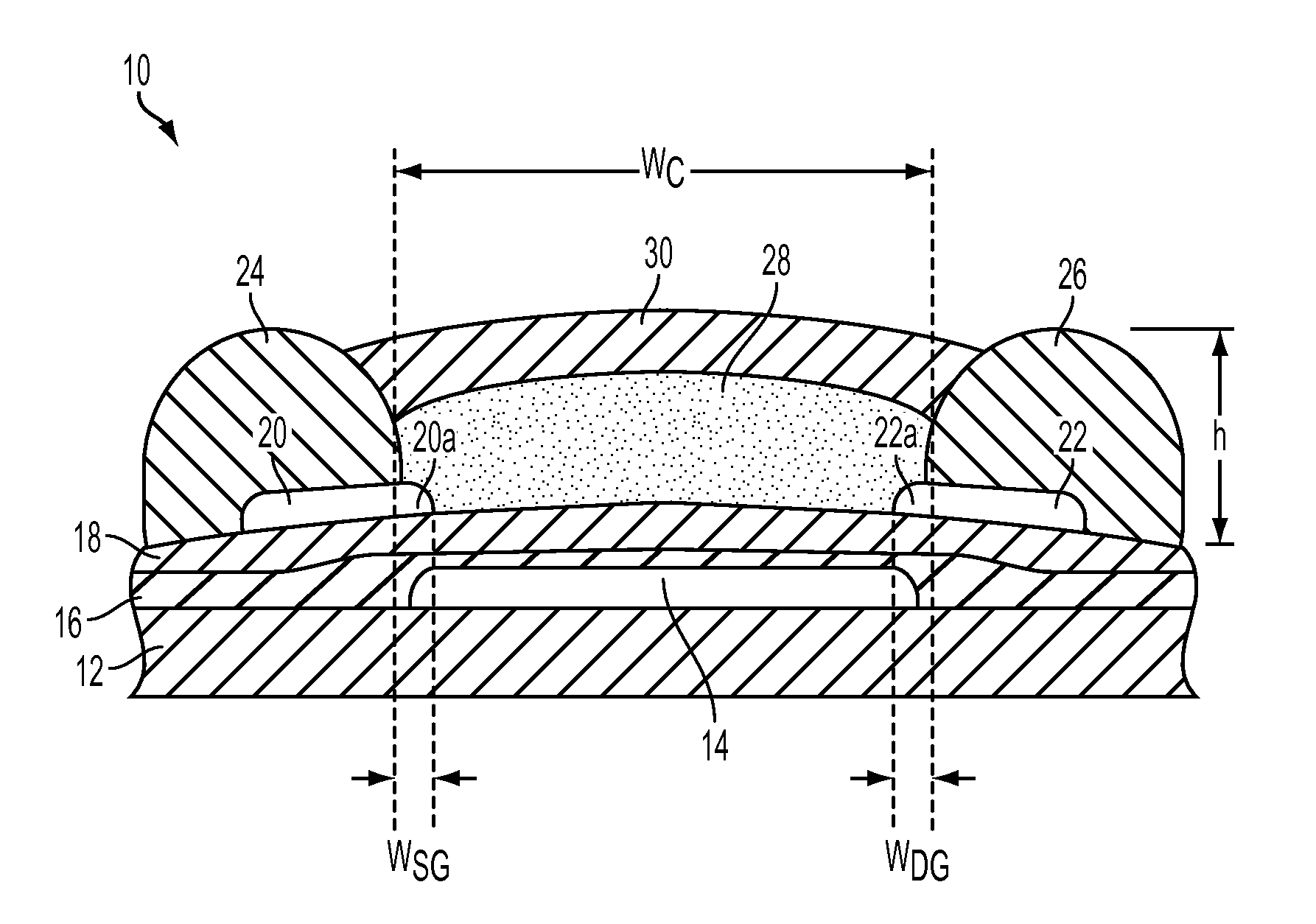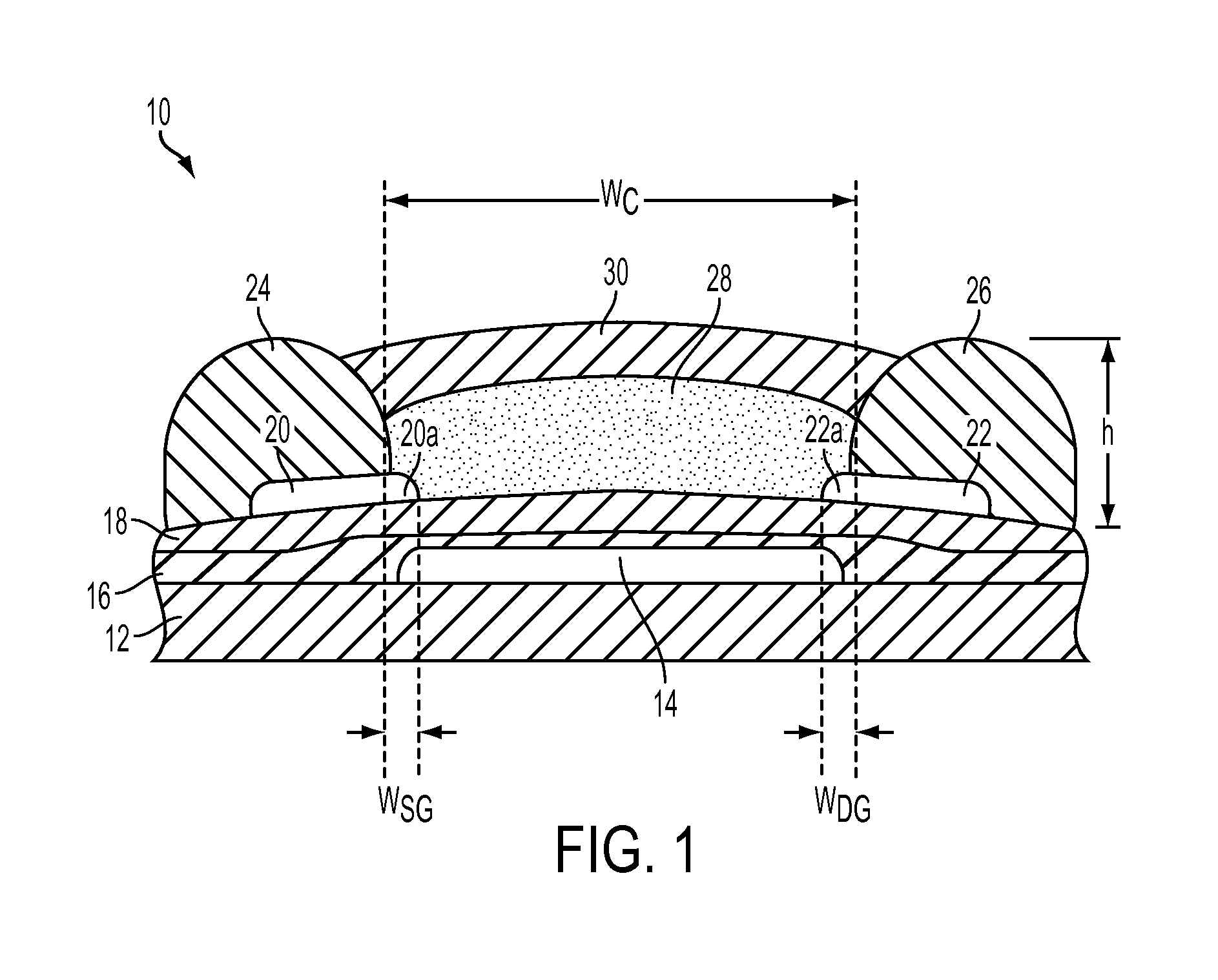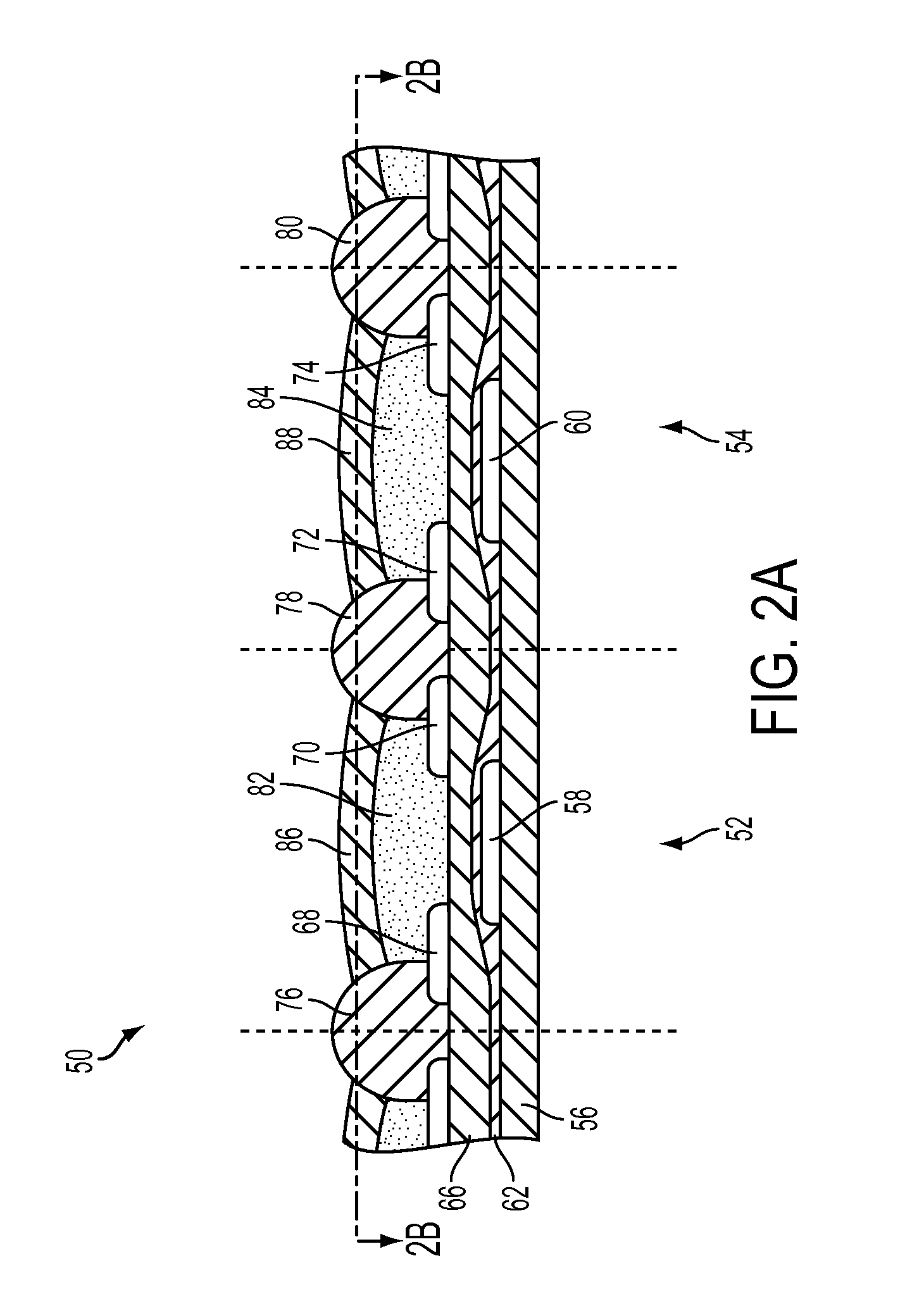Printed Material Constrained By Well Structures And Devices Including Same
a printing material and well structure technology, applied in the direction of basic electric elements, semiconductor devices, electrical equipment, etc., can solve the problems of cross contamination of devices to devices, short circuits between devices, and tendency to spread after, so as to improve device-to-device isolation
- Summary
- Abstract
- Description
- Claims
- Application Information
AI Technical Summary
Benefits of technology
Problems solved by technology
Method used
Image
Examples
first embodiment
[0026]According to this disclosure, illustrated in FIG. 1, a bottom-gate transistor device is fabricated. The embodiment makes extensive use of digital lithography, digital printing or laser transfer processes. Spreading of materials deposited, for example by a digital lithography process, is reduced so that more compact devices are possible, smaller pitch arrays are possible, and device-to-device shorting is eliminated. The embodiments described herein related to the formation of active electronic devices, such as electronic switching elements, as opposed to passive elements, such as electrical filters and the like.
[0027]With reference to FIG. 1, the formation of a device 10 begins with preparation of a suitable substrate 12. Many different types of substrates may be employed, since growth is not epitaxial from the substrate. Examples of substrate materials include ceramics, polymers, crystalline materials, metals, etc., and may be rigid or flexible. In the case of conductive subst...
embodiment 150
[0058]Furthermore, the above disclosure has been based on forming a functional layer below source and drain electrodes. However, it is possible to first form the source and drain electrodes, then form the functional layer thereover. In this case, the functional layer has to be very thin to allow electron tunneling through the layer and / or to exhibit a sufficient population of pinholes for an electrical contact to form between source / drain electrodes and a semiconductor layer formed between the walls thereover. An embodiment 150 having the functional layer 18 formed over electrodes 20, 22 is illustrated in FIG. 5. Again, an overlap 20a, 22a is provided between a gate electrode 14 and a portion of source electrode 20a and drain electrode 22a. The method for forming such a device is substantially as described above, with the order of forming the source and drain electrodes and the functional layer simply reversed.
PUM
 Login to View More
Login to View More Abstract
Description
Claims
Application Information
 Login to View More
Login to View More - R&D
- Intellectual Property
- Life Sciences
- Materials
- Tech Scout
- Unparalleled Data Quality
- Higher Quality Content
- 60% Fewer Hallucinations
Browse by: Latest US Patents, China's latest patents, Technical Efficacy Thesaurus, Application Domain, Technology Topic, Popular Technical Reports.
© 2025 PatSnap. All rights reserved.Legal|Privacy policy|Modern Slavery Act Transparency Statement|Sitemap|About US| Contact US: help@patsnap.com



